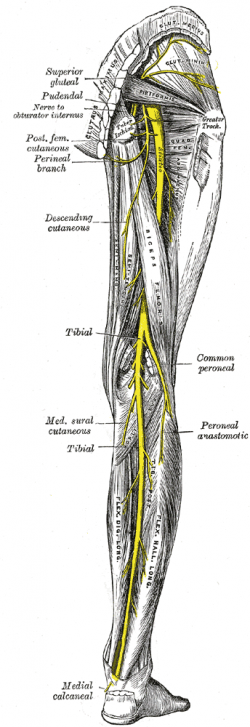

Piriformis Syndrome is a neuro-muscular condition that results from irritation and/or compression of the Sciatic nerve via the thick deep gluteal/hip muscle know as the Piriformis. The Piriformis, which aids in external rotation of the hip joint, has an intimate relationship with the sciatic nerve – the largest nerve in the body – which supplies the lower extremities with motor and sensory function. The sciatic nerve passes underneath (80% of population) or pierces through (20%) the Piriformis muscle.
Piriformis syndrome typically starts with pain, tingling and/or numbness in the buttock region. Pain can be severe and even extend down the length of the sciatic nerve (from hip through ankle/foot). Pain can be exacerbated with running, cycling, rowing and prolonged sitting.
 Runners, Cyclists and Rowers are especially prone to this condition due to overuse and strenuous use of the hips and legs. Some of the specific mechanisms of this injury are:
Runners, Cyclists and Rowers are especially prone to this condition due to overuse and strenuous use of the hips and legs. Some of the specific mechanisms of this injury are:
Conclusion:
This condition, if not addressed and managed properly can profoundly influence athletic function and severely limit participation. Again, the emphasis is “living upstream” or remaining preventive with your body by listening to clues about slight nuances of imbalance, stress and/or training techniques. This condition typically resolves with the appropriate therapy applications and the above list is not to overwhelm but to address the layers that typically need to be peeled back when “fixing” an athletic injury.
Image: Gray’s Anatomy